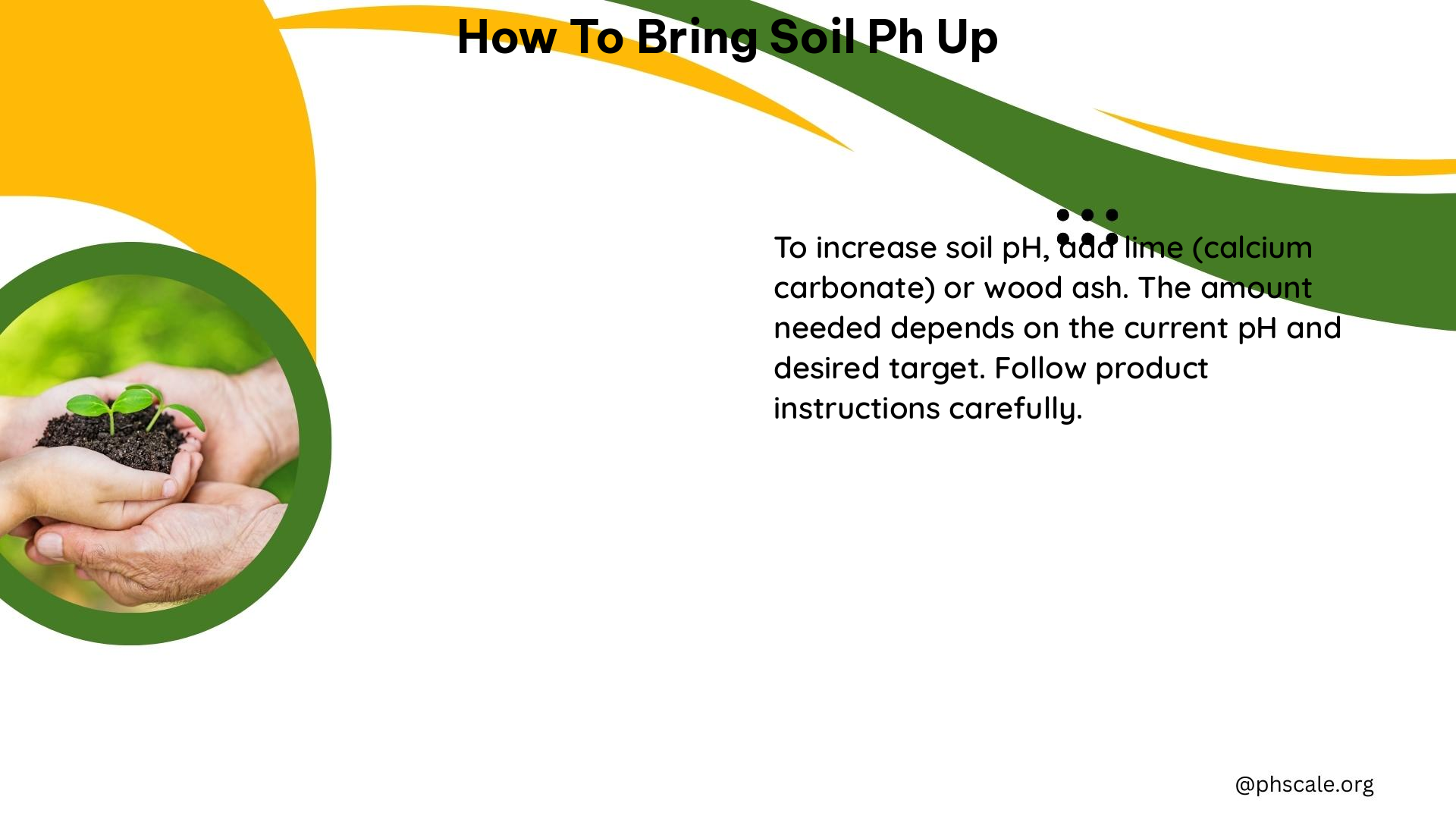Bringing soil pH up is a crucial step in maintaining a healthy garden or lawn. Soil pH affects the availability of essential nutrients, and adjusting it can significantly improve plant growth and overall soil health. In this comprehensive guide, we’ll explore various organic methods to raise soil pH, providing you with the knowledge and tools to achieve the desired results.
Common Methods to Organically Raise Soil pH
1. Lime
- Agricultural Lime: This is the most common and effective way to increase soil pH. The amount of lime needed varies depending on the soil type and the desired pH increase. For sandy soils, you’ll need about 2 pounds of lime per 100 square feet, while clay soils require around 5 pounds per 100 square feet.
- Dolomitic Lime: This type of lime contains both calcium and magnesium, making it suitable for soils that need both nutrients.
2. Wood Ashes
- Wood Ash Application: Spread a ¼-inch layer of dry, untreated wood ashes on the soil surface. Avoid using ashes from treated wood, as they may contain harmful chemicals or heavy metals.
- Frequency: Wood ashes can raise pH quickly, but their effects are relatively short-lived. Reapply as needed, taking care not to overdo it, especially for plants that prefer acidic soil.
3. Baking Soda
- Mixing Ratio: Mix 1 tablespoon of baking soda with 1 gallon of water. This method is quick and cost-effective but may not have long-lasting effects.
- Frequency: Reapply the baking soda solution every few months as needed to maintain the desired pH.
Additional Tips

- Soil Testing: Regularly test your soil pH to monitor the effectiveness of your chosen method and make adjustments as needed.
- Application: Mix the chosen amendment into the top 6 inches of soil and water well to activate the process.
- Plant Selection: Consider planting species that thrive in the natural pH range of your soil to minimize the need for frequent amendments.
Recommended Products
- Agricultural Lime: Available at most garden centers or online.
- Dolomitic Lime: Also available at garden centers or online.
- Wood Ashes: Can be obtained from wood-fired stoves or by collecting ashes from bonfires.
- Baking Soda: A common household item.
Dealing with Contaminants and Chemicals
- Heavy Metals: Avoid using wood ashes from chemically treated wood to prevent introducing heavy metals into the soil.
- Excessive Irrigation: Limit irrigation to prevent leaching minerals and nutrients out of the soil.
- Ammonium Nitrification: Reduce excessive ammonium inputs to prevent acidification.
History and Balance
- Natural Equilibrium: Soil pH tends to return to its natural equilibrium over time. Regular testing and adjustments are necessary to maintain the desired pH.
- pH Range: The ideal pH range for most plants is between 6.0 and 6.5, where nutrients are most available.
Helpful pH Quantity to Consume
- pH Testing: Regularly test your soil pH to ensure it remains within the desired range for your plants.
Action Steps
- Test Soil pH: Determine the current pH of your soil using a soil test kit or through your local extension office.
- Choose an Amendment: Select the most suitable method based on your soil type, plant requirements, and available resources.
- Apply the Amendment: Mix the chosen amendment into the soil according to the recommended amounts and frequencies.
- Water and Monitor: Water the soil well and regularly test the pH to ensure the desired level is maintained.
By following these organic methods, you can effectively bring your soil pH up and create a thriving garden or lawn. Remember to regularly monitor and adjust as needed to maintain the optimal pH range for your plants.
